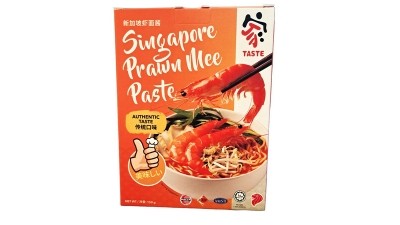Contradiction challenges: Indonesian food innovation must cater to dual demands for health and heavy flavours

Many Asian markets favour strong flavours in their foods and beverages, but Indonesia is well-known to have some of the heaviest-flavoured cuisine in the region, not only from a spice perspective but also in the liberal use of salt and sugar.
As such, whilst it is already difficult to reformulate products that require salt or sugar reduction to meet the taste of the average Asian consumer, the challenge is even more prominent in Indonesia where consumer taste buds are even more trained to heavy flavourings.
“It is very clear in Indonesia that there are contradicting demands and expectations here – many consumers have become more aware of their health and want to eat healthier, but they are very accustomed to heavy salty and sweet flavours,” KH Roberts Commercial Director Rick Koh told FoodNavigator-Asia at the recent Fi Asia 2024 show in Jakarta, Indonesia.
“The prevalence of diabetes has gradually become well-recognised as Indonesia has one of the highest rates in the region, and consumers know that there is a need to reduce salt and sugar intake – but their taste buds are unable to immediately make that change.
“So what many food companies here are looking for is a way to strike that fine balance, and this is where innovative technology and formulations really need to play an important role.”
This challenge of conflicting demands is being further exacerbated by demands for products to be made more affordable in a time of economic stress.
“There is a strong view that natural is always better, and this ties in to the demand for healthier and clean label products – but the fact is that making this change requires a higher cost,” he added.
“But Asia and particularly Indonesia are price sensitive markets, so it is also imperative for us to make sure that we manage costs so that the end-products made by manufacturers can be sold at a mass scale.
“This again calls in the need for yet another balancing act, between natural ingredient usage and final product costs.”
Given these challenges, the firm believes that flavour innovation needs to be tightly incorporated with current industry trends in order to strike the desired balance.
Familiar yet different
“At the end of the day, taste and flavour are still at the forefront of consumer purchasing decisions so this still must be gotten right or they will not be making return purchases,” he said.
“For current flavour trends, we are seeing a lot of demand for things that are familiar and nostalgic yet different – so in Indonesia they want things like pulut hitam (black glutinous rice) to be made into new formats like ice cream, or lapis lapis (layer cake) in wafer form
“Other trends include fusion flavours such as hibiscus yuzu for drinks or speculoos orange.
“The key is to really pay close attention to these trends over the next few years and innovate alongside these, particularly when we are dealing with the impacts of larger issues such as supply chain, political instability and so on.
“One area that suppliers can capitalise on at this time though is to provide alternative solutions to raw materials that are in short supply across the region due to these issues, such as the ongoing cocoa shortage, as technology and flavour solutions are able to come into play and help address these shortages.”


















